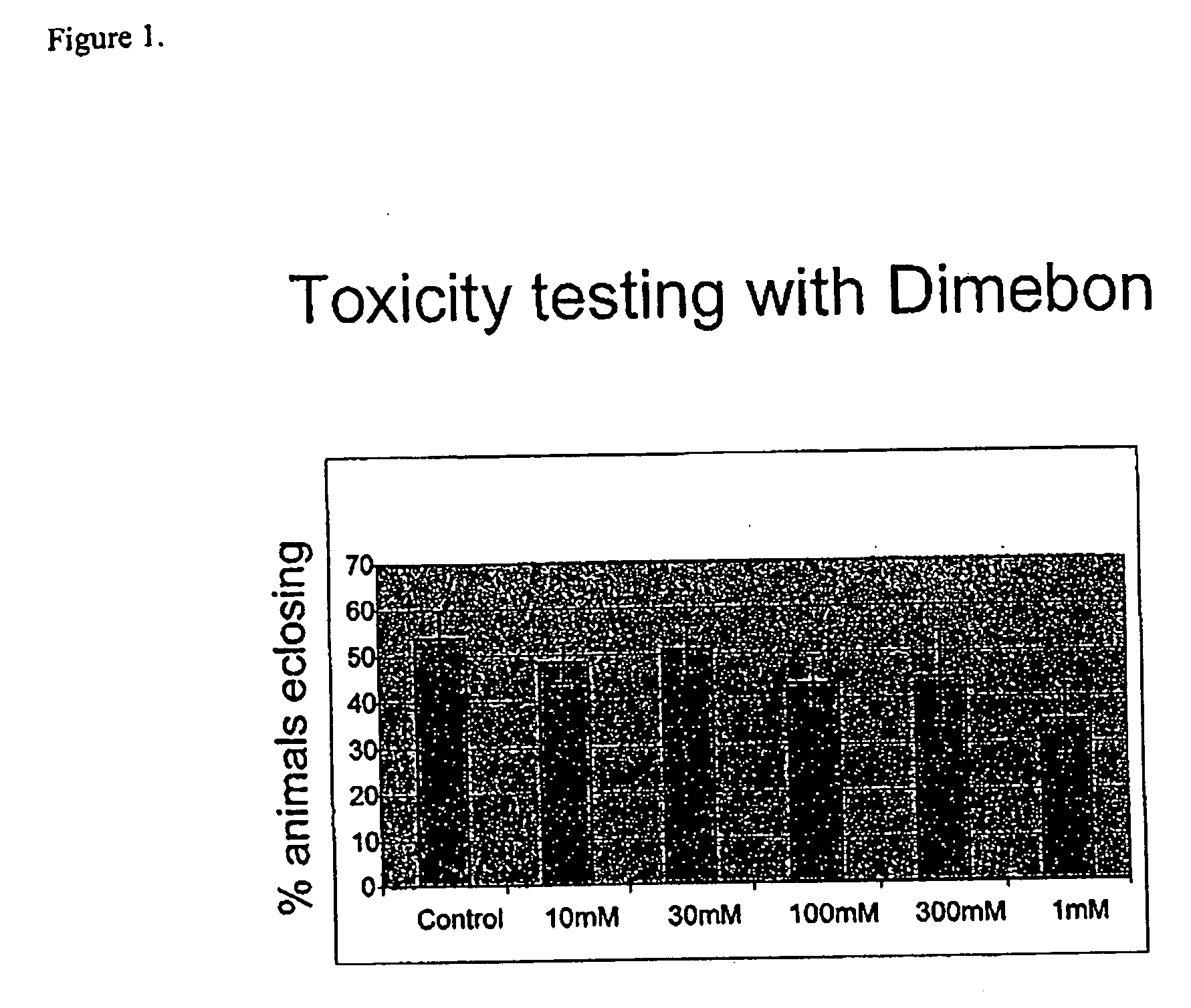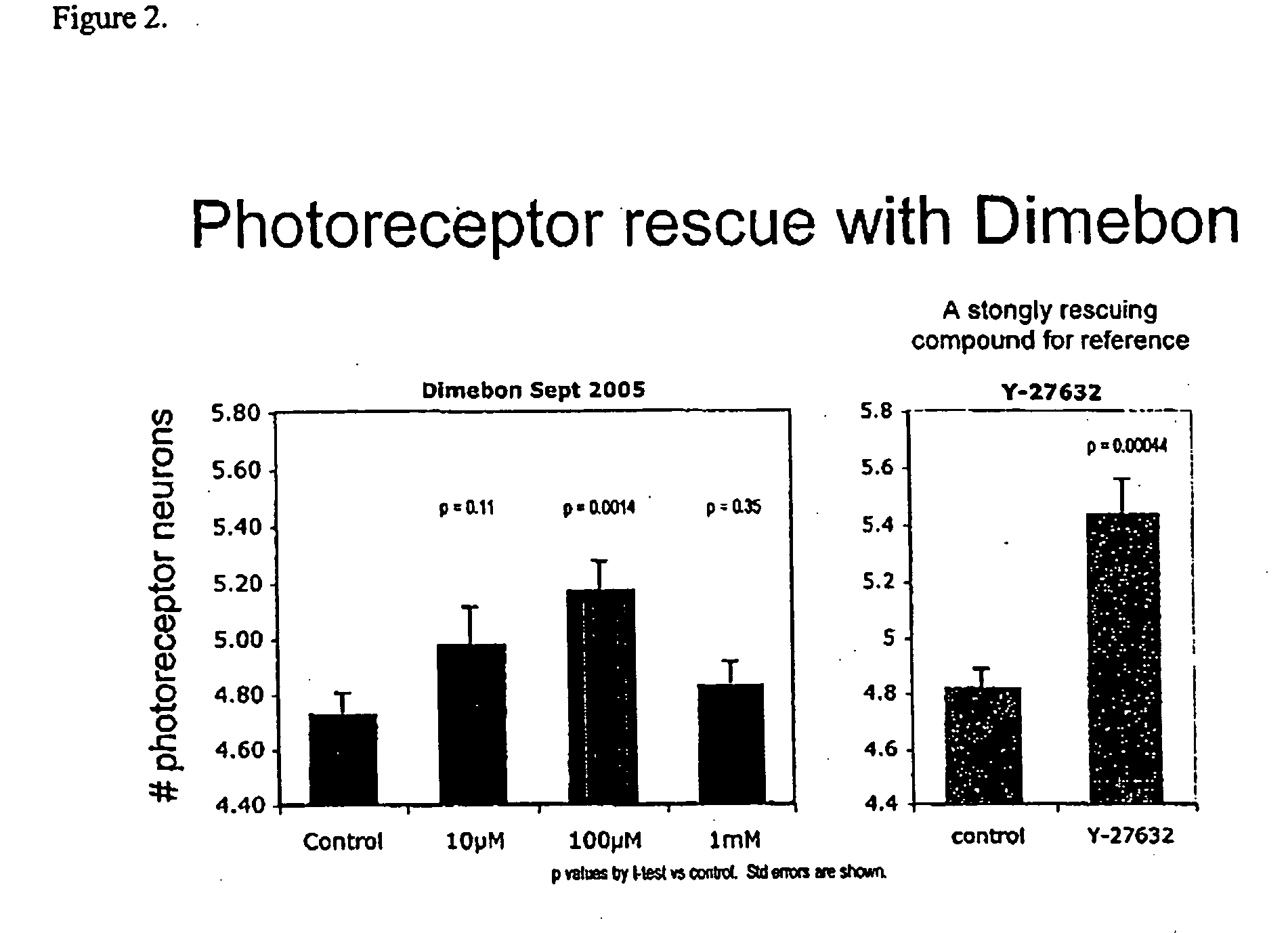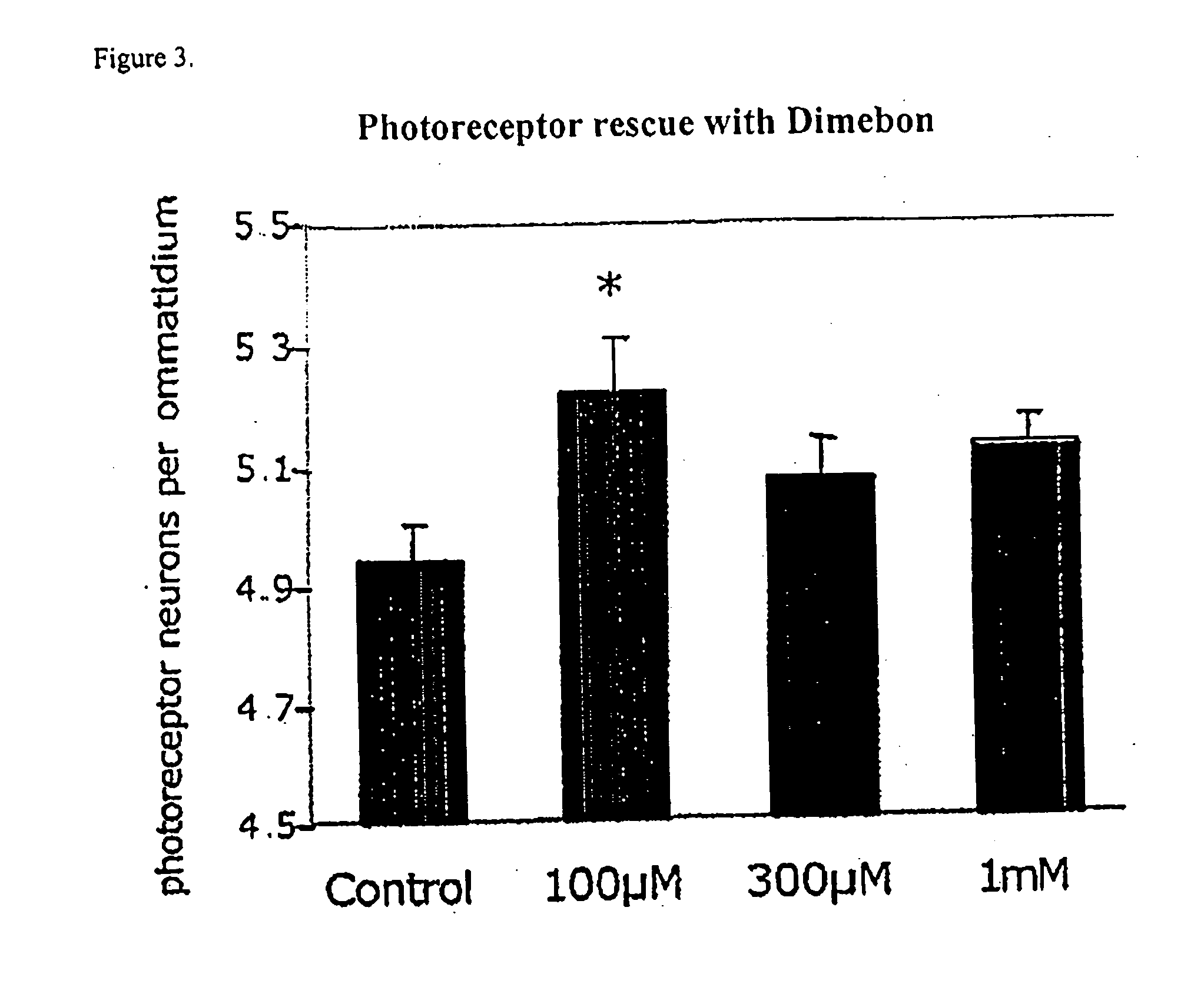Methods and compositions for treating Huntington's disease
a technology of compositions and methods, applied in the field of hydrogenated pyrido4 and 3bindoles, can solve the problems of no cure, no clinically obvious effect, and disease not only a devastating illness but also a protracted illness, so as to delay the onset and/or development, prevent, slow down the progression
- Summary
- Abstract
- Description
- Claims
- Application Information
AI Technical Summary
Problems solved by technology
Method used
Image
Examples
example 1
Determination of Toxicity Properties of Dimebon
[0093] Dimebon, 2,8-dimethyl-5-(2-(6-methyl-3-pyridyl)-ethyl)-2,3,4,5-tetrahydro-1H-pyrido[4,3-b]indole dihydrochloride, was used as a representative compound of hydrogenated pyrido[4,3-b]indoles.
×2 HCl [0094] where R1 and R3 are methyls, and [0095] R2 is 2-(6-methyl-3-pyridyl)-ethyl
[0096] Dimebon was evaluated for toxicity levels in wildtype Drosophila fruit flies. Dimebon was administered daily at doses ranging from 10 μM to 1 mM to explore its toxicity. An untreated control group was also studied in this experiment. The concentrations given were concentrations of dimebon in the food that animals drink / eat ad libitum. The food consisted of cornmeal (61.2 g), dextrose (129.4. g), yeast (32.4 g) and agar (9.3 g) in 1 liter of water. Concentrated compounds were added to melted agar food cooled to just above the point of setting (about 40° C.), mixed and dispensed.
[0097] About 500 wild type Drosophila eggs were collected on grape jui...
example 2
Determination of Dimebon's Ability to Inhibit Huntingtin-Induced Neurodegeneration of Photoreceptor Neurons in Drosophila Eyes
[0100] The gene responsible for Huntington's disease was discovered in 1993. This has allowed scientists to develop transgenic animal models of Huntington's disease. For instance, transgenic mouse, fly and worm models engineered to express the mutant gene causing Huntington's disease have greatly facilitated the discovery and elucidation of pathogenic mechanisms. In rodents and Drosophila fruit flies, the insertion of the huntingtin gene into the genomes of these animals has been shown to induce many of the pathological and clinical signs of Huntington's disease seen in humans and therefore the study of these transgenic animals is useful to assess the pharmacological activities of potential Huntington's disease therapeutic agents prior to testing them in humans.
[0101] The expression of mutant huntintin protein in Drosophila fruit flies results in a fly phen...
example 3
Determination of Dimebon's Effect on Motor Ability in a Drosophila Model
[0111] The motor function of Drosophila obtained as described in the examples above was assessed by exploiting the strong negative geotropism of flies to climb upwards when they are tapped to the bottom of a vial. See, Le Bourg and Lint (1992) Hypergravity and aging in Drosophila melanogaster. 4. Climing activity. Gerontology 38, 59-64. Animals were placed in a graduated vessel (e.g., a measuring cylinder). The distance climbed in 10 seconds was measured for each animal over 3 trials with a 5 minute rest period. In a separate experiment using tall thin plastic tubes rather than glass vials, the distance climbed in 30 seconds was also measured. Animals were scored for outcome without knowledge of treatment group.
[0112] Flies were tested for functional rescue using a behavior assay (climbing assay) where the distance climbed was measured. Flies are negatively geotropic and hence immediately climb up the wall of ...
PUM
| Property | Measurement | Unit |
|---|---|---|
| elimination half life | aaaaa | aaaaa |
| elimination half life | aaaaa | aaaaa |
| elimination half life | aaaaa | aaaaa |
Abstract
Description
Claims
Application Information
 Login to View More
Login to View More - R&D
- Intellectual Property
- Life Sciences
- Materials
- Tech Scout
- Unparalleled Data Quality
- Higher Quality Content
- 60% Fewer Hallucinations
Browse by: Latest US Patents, China's latest patents, Technical Efficacy Thesaurus, Application Domain, Technology Topic, Popular Technical Reports.
© 2025 PatSnap. All rights reserved.Legal|Privacy policy|Modern Slavery Act Transparency Statement|Sitemap|About US| Contact US: help@patsnap.com



